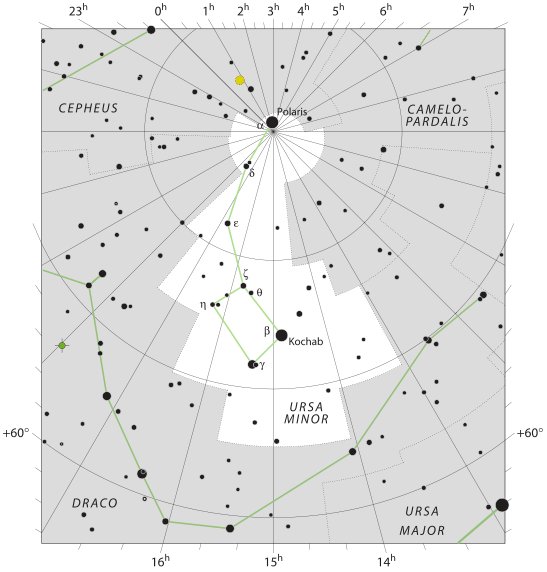310. Once again. The month Tehetu'upú seems to have begun in the interval between FEBRUARY 14 (at heliacal Alrisha, the Knot) and Gemma (α Corona Borealis) at the Full Moon, when Sirrah (the Navel of the Horse) was culminating:
The π date November 10 (314) was 54 days before January 3 (368). 368 - 80 = *288 = *234 + *54. When at the time of rongorongo Acrux culminated (at 21h) in May 13 it could have been deduced that the same event at the time of the Bull should have occurred about 64 days earlier (because the precession had since then moved the stars ahead with around 64 right ascension days). May 13 (133) - 64 = 69 (MARCH 10). The 214 date was 69 (MARCH 10) - 45 (FEBRUARY 14) = 24 days earlier, which means we should look for the corresponding glyph 24 positions earlier than Cb2-3 (27). This was where Alrisha had risen with the Sun. At the time of rongorongo Alrisha rose with the Sun 64 days later in the year, viz. in day 45 (FEBRUARY 14) + 64 = 109 (= 80 + *29) = April 19. At the time of Bharani (*41.4) the star at the Knot (Alrisha) would have risen with the Sun 41 days earlier, and 109 (April 19) - 41 = 68 ("March 9). From the time of Bharani to the time of the Bull there were *64 - *41 = *23 precessional days, therefor the date "February 14 (45) could have been designed to be 23 days (glyphs) later in the text than FEBRUARY 14 (45). And the date February 14 (45) should then be 41 days later in the text than "February 14 (45), implying that the rongorongo date at "February 14 (45) should be January 4.
68 (Cb2-2) - 45 (Cb1-3) = 23 = the precessional distance from the time of Bharani (*41) to the time of the Bull (*64). Therefore Tehetu'upú 14 (Cb2-2) ought to be illustrated in the same fashion as FEBRUARY 14 (Cb1-3):
I have suggested that Hamal corresponded to the first ariki motongi and that the last one (Hotu A Matua) was Antares, and reasonably the 2nd ariki motongi should then be Alcyone:
... Brown associates it with Aloros, the first of the ten mythical kings of Akkad anterior to the Deluge, the duration of whose reigns proportionately coincided with the distances apart of the ten chief ecliptic stars beginning with Hamal, and he deduces from this kingly title the Assyrian Ailuv, and hence the Hebrew Ayil; the other stars corresponding to the other mythical kings being Alcyone, Aldebaran, Pollux, Regulus, Spica, Antares, Algenib, Deneb Algedi, and Scheat ... Manuscript E tells about how the stone figure of Oto Uta was 'left behind out in the bay' and how Hotu A Matua ordered him to be fetched, ... At the time of the loading of the emigrant canoe, Hotu Matua ordered his assistant Teke to take a (stone) figure (moai) named 'Oto Uta' on board the canoe, along with the people (aniva) who were emigrating. However, the figure was left behind 'out in the bay' (E:73). After the arrival in the new land, after disembarkation in the bay of Anakena, and after the return of the explorers to the homeland, our source continues with the following account [E:87-90]. ... On the thirtieth day of the month of October ('Tangaroa Uri'), Hotu asked about the stone figure (moai maea) named Oto Uta. Hotu said to Teke, 'Where is the figure Ota Uta (corrected in the manuscript for Hina Riru)? Teke thought about the question and then said to Hotu, 'It was left out in the bay.' Hotu said to Pure O, to Pure Ki, and to Pure Vanangananga: 'You fellows (kope), sail to the friend (hoou), to Oto Uta. Bring him here, he who is resting out in the bay. Move him carefully (? nee), you fellows, so that the king, that Oto Uta is not damaged!' Pure O, Pure Ki, and Pure Vanangananga took the canoe, put it into the water, and sailed to Hiva .... but in this process the neck of Oto Uta was broken: ... ka hati toou ngao e oto uta e te ariki e / mo tau papa rangaranga o haho i te tai / mo tuu huehue rangaranga o haho i te tai / mo tau hahave rere ai ka pae / mo tae ngu rere ai ka pae / mo te ika aringa riva nei he aku renga ai ka pae ... ... Broken is your neck, oh Oto Uta, oh king! / Floating (?) like a raft (?) out at sea. / To be erected for the drifting huehue (fish) out at sea. / Able (?) to put an end to the flight of the flying fish hahave; / Able (?) to put and end to the flight of the flying fish ngu; / Put an end to this fish, a dorado, with the good face! (E:90) ... February was a very special month because it was shorter than it ought to have been.
Above I have abandoned my idea to count with for instance 29 days in January according to the Pre-Julian Moon calendar. Instead it seems more rational to count with 31.
|
||||||||||||||||||||||||||||||||||||||||||||||||||||||||||||||||||||||||||||||||||||||||||||||||||||||||||||||||||||||||||||||||||||||||||||||||||||||||||||||||||||||||||||||||||||||||||||||||||||||||||||||||||||||||||||||||||||||||||||||||||||||||||||||||||||||

















